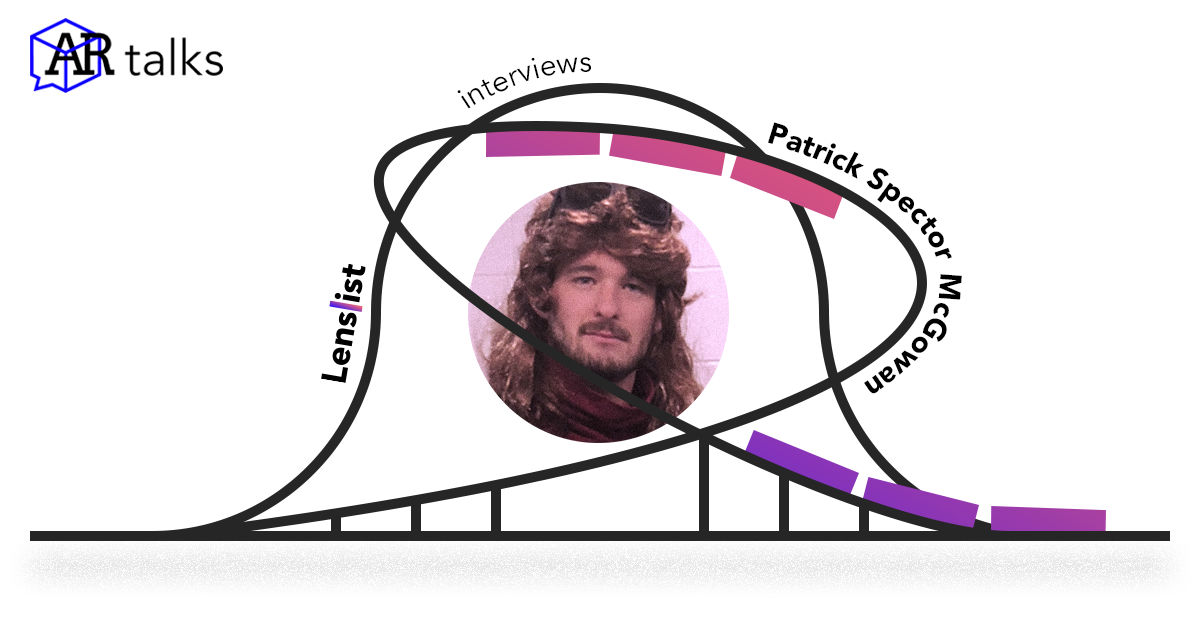AR talks | Patrick Spector McGowan

Having said that, I think it’s pretty clear that wearable AR glasses/headsets are the future of AR and their development is something companies like Facebook, Apple, Denny’s, Microsoft and Google are focusing on, long-term (just kidding about Denny’s. As far as I know, they’re sticking to breakfast foods. Just wanted to make sure you’re still awake). AR is designed to be seamlessly integrated with physical reality, but the phones and other screens we use to view content remove you from being fully immersed. As demand for this type of content grows, so will the focus on softening/removing that divide through wearables. At that point, digital assets (marketing, art, wayfinding, etc) will be able to replace physical ones, and our physical reality will become infinitely customizable.
And I think the content itself will also evolve. Movies, and storytelling in general, could be accessible in real life locations. For example, you could see Spider-Man and Venom duelling it out in the streets of Manhattan. Or you could bring other worlds to you in the form of newscasts playing out on your living room table. For most content today, the audience perspective is limited by the director’s choice of a window into a scene. With AR, we can fully immerse ourselves within a scene, walking around inside of the story. I think that the ability to wrap an entirely new world around or inside our own will be very powerful for connecting people and communicating information.
Your Rollercoaster AR lens is meant to be an ad and a ‘trial’ for your upcoming IOS app. What are the reasons for such a distribution of the AR app?
Like I mentioned above, the lens was really just an experiment – we didn’t know if it was even possible to build something like that or if the end result would be something people would enjoy playing. When we finally finished the MVP, we published it and posted about it on Reddit and the response was immediate. People were requesting more and more features and suggesting that they’d love a full app with more rides and more traditional gameplay and game mechanics. Snapchat is great for quickly building a proof-of-concept and getting it out to people, but it is currently fairly limiting in terms of memory/performance and functionality to create the experience people were requesting. And while we could wait for phones to become more powerful and the platform to expand, an iOS app immediately gives us more freedom and a more direct way to monetize our creations.
We can’t wait for the app to be published! Do you have any tips for the beginners in AR? Would you be so kind as to share with our readers any of your secrets of creating an engaging and successful effect?
I will quote my cofounder Ryan Hafner here – “For any creative content, you should choose subject matter that matters to you. The more passionate you are about what you’re creating, whether it be memes or music or tap dancing, the more effort you’ll be willing to put in to make it great. Add layers and easter eggs. Let your audience unwrap your creation and discover things they weren’t expecting.”
Thank you, Patrick, for your time. We wish you luck in changing the future!
